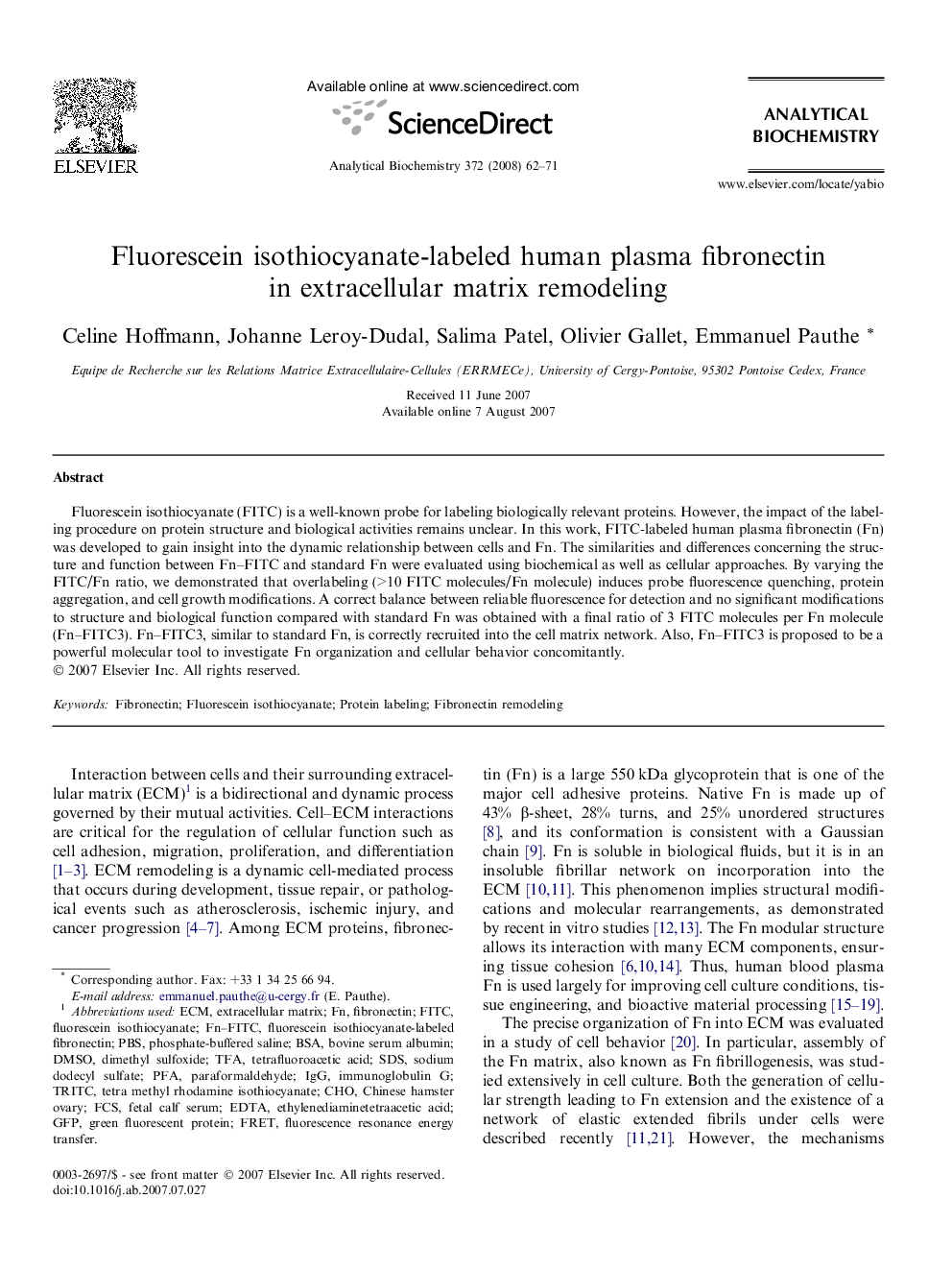| Article ID | Journal | Published Year | Pages | File Type |
|---|---|---|---|---|
| 1175860 | Analytical Biochemistry | 2008 | 10 Pages |
Fluorescein isothiocyanate (FITC) is a well-known probe for labeling biologically relevant proteins. However, the impact of the labeling procedure on protein structure and biological activities remains unclear. In this work, FITC-labeled human plasma fibronectin (Fn) was developed to gain insight into the dynamic relationship between cells and Fn. The similarities and differences concerning the structure and function between Fn–FITC and standard Fn were evaluated using biochemical as well as cellular approaches. By varying the FITC/Fn ratio, we demonstrated that overlabeling (>10 FITC molecules/Fn molecule) induces probe fluorescence quenching, protein aggregation, and cell growth modifications. A correct balance between reliable fluorescence for detection and no significant modifications to structure and biological function compared with standard Fn was obtained with a final ratio of 3 FITC molecules per Fn molecule (Fn–FITC3). Fn–FITC3, similar to standard Fn, is correctly recruited into the cell matrix network. Also, Fn–FITC3 is proposed to be a powerful molecular tool to investigate Fn organization and cellular behavior concomitantly.
